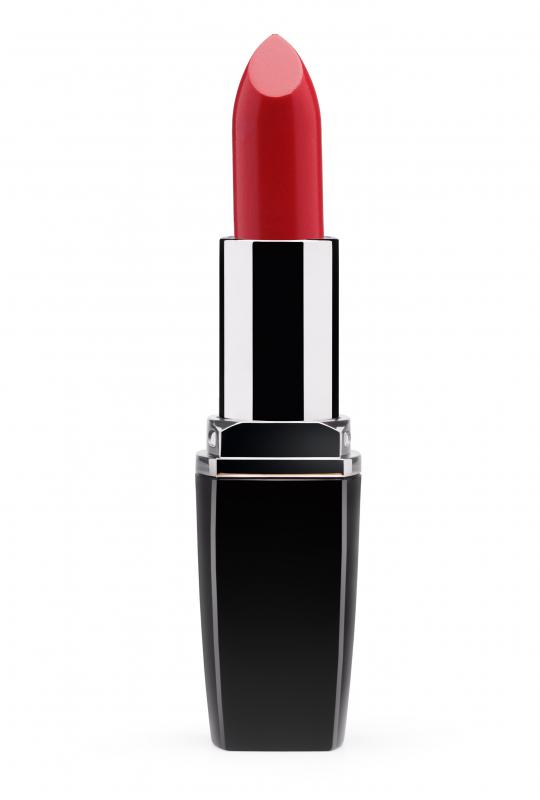At BeautyAnswered, we're committed to delivering accurate, trustworthy information. Our expert-authored content is rigorously fact-checked and sourced from credible authorities. Discover how we uphold the highest standards in providing you with reliable knowledge.
What is Organic Lipstick?
Organic lipstick substitutes natural pigments, oils, and butters for many of the toxic ingredients found in traditional lip makeup. Conventional lip pigments usually derive their hues from synthetic colors mixed in heavy waxes and preserved by parabens, which are chemicals that have been shown in medical studies to cause cancer in some animals. Concern for health and the environment are two reasons that might be compelling the expansion of organic lipstick offerings around the world. These environmentally-friendly lip stains have become part of an emerging green cosmetics trend.
The color for organic lipstick comes from fruits and flowers. These pigments are typically mixed with coconut, castor, and palm oil. Solid moisturizers like cocoa butter and shea butter are often added to give the signature clay-like lipstick texture that can be molded into the tubular shape that is typical for lipsticks. These butters also help the color adhere to lips.

Petrolatum, a staple of most mainstream lipsticks, is absent from organic varieties because some manufacturers are concerned about studies suggesting petroleum, the precursor of petrolatum, is toxic. Ingredient lists for organic lipsticks also show the absence of chemical tar-based colors and aluminum, which research suggests has a possible link to Alzheimer’s disease. Some consumers have been concerned that such toxins can leach from their lips into foods and drinks.

Government tests showing an increasing presence of lead in lipsticks have resulted in many organic lipstick makers advertising that they are 100-percent lead free. Most organic lipsticks also advertise that they are gluten-free for those who have allergies. Soy-free is another common claim on organic lipsticks when manufacturers wish to address consumer concerns about the possible risk of brain ailments and thyroid problems linked to soy. Most governments do not investigate the veracity of these claims.

Flower blooms and berries yield a wide enough range of natural dyes that organic lipsticks generally do not result in a lack of lip color choices. Most manufacturers typically offer groups of red, purple, brown and pink organic lipstick shades to closely rival selections in traditional lipsticks. The lip colors generally have much more moisture than regular lipsticks due to the addition of natural oils and butters; however, this also means that color might fade faster and that organic lipstick will have to be reapplied throughout the day. Lips lack their own source of moisture, however, so many people believe lips become healthier from the use of moisturizing, organic lipsticks. Infections and bacteria can enter through cracks in poorly moisturized lips.
AS FEATURED ON:
AS FEATURED ON:















Discussion Comments
Organic lipstick is a great idea, but the cosmetic companies are going to have to come up with a better way to make it stay on. I love the shea butter lipstick I've got, but it stays on about 30 minutes. If I'm re-applying it that often, I'm buying a lot more, which may be great for the company, but it's not very eco-friendly.
Re-reading this post made me chuckle, albeit a little ruefully. I'm griping about the staying power of organic lipstick. Dear Lord, is that a first world problem or what? Maybe we all need to think about our priorities.
One of my favorite organic lipsticks uses mango butter in the formula. It's really a great lipstick. However, as the article mentions, it does wear off faster, and so I have to re-apply it during the day.
There are enough colors available for me, so I like to use organic lipstick whenever possible. And I love the way the mango butter makes my lips feel. I love the moisture factor. It is one of the best ingredients in lipstick, in my opinion. I'm willing to pay more for a good lipstick because they tend to last longer.
Post your comments